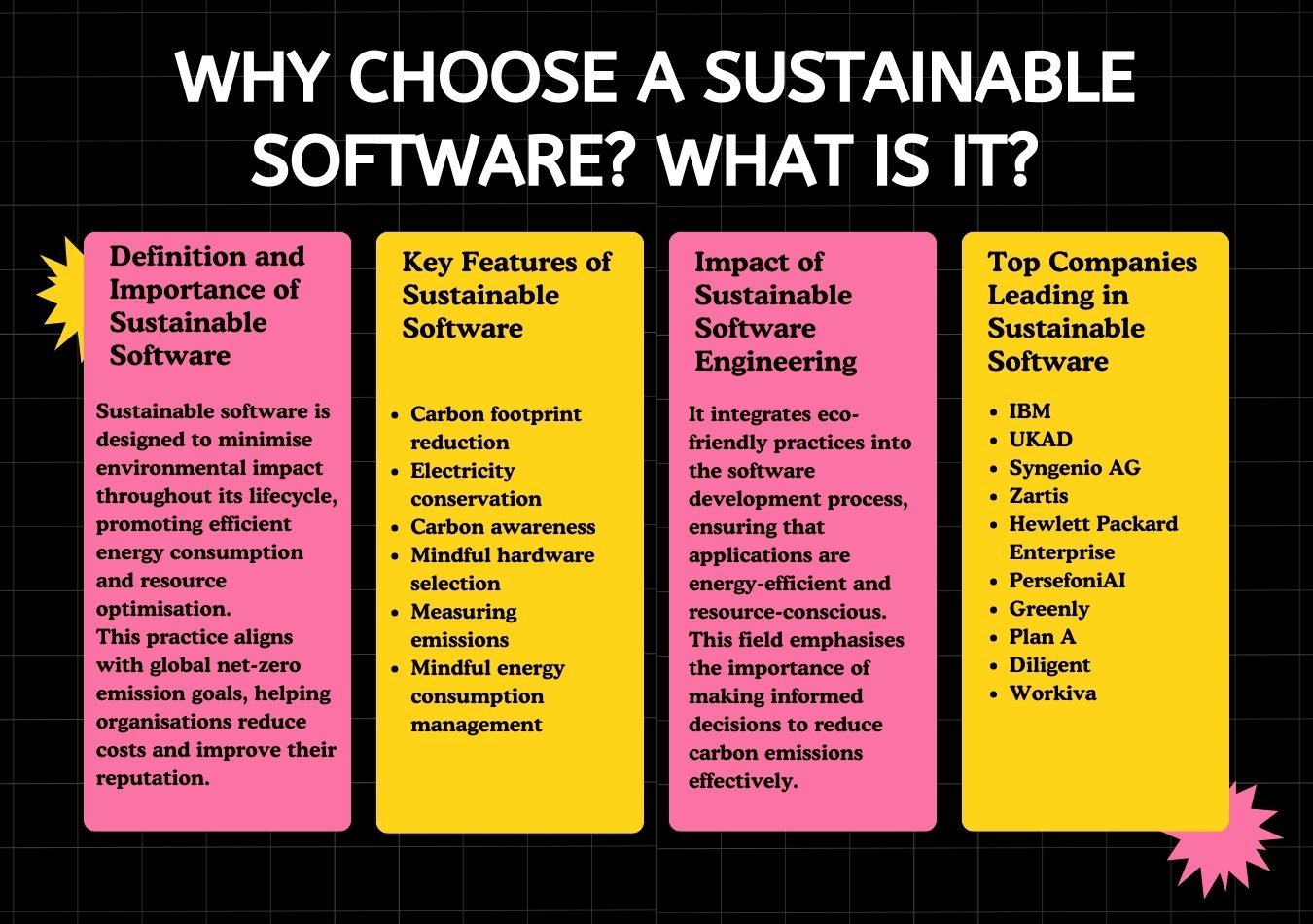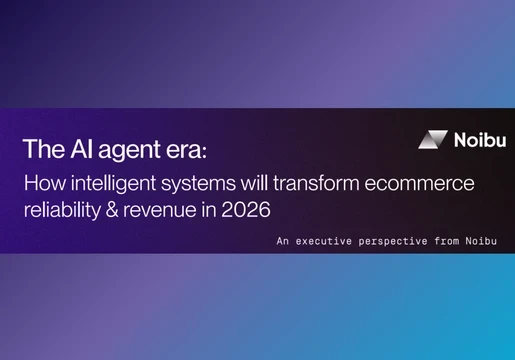As the deadline to meet net-zero emissions targets set for 2030 and 2050 approaches for organisations, the time to reduce emissions is now.
With new technologies being introduced daily, it's becoming increasingly challenging to control waste and energy consumption, especially in the digital IT sphere. Often, organizations don't realize that carbon emissions are emitted from intangible sources too.
McKinsey & Company’s analysis suggested that starting now to increase the sustainability of software and data could lower CO2 emissions by approximately 5% by 2030.
This article tells you everything you need to know about the best sustainable software solutions and organisations leading in the sustainable IT space.

What is Sustainable Software?
Sustainable software is an eco-friendly software designed to reduce the environmental impact of computing throughout its lifecycle. Sustainable software strives to reduce energy consumption, optimise resources efficiently and promote responsible use in alignment with net zero emission goals.
Companies develop such eco-friendly software with the aim of reducing the carbon footprint linked to software development and deployment. This is still an emerging field where the environmental impact of intangible technology is being acknowledged.
Embracing sustainable practices and principles in software development can help organisations contribute to net zero emissions goals worldwide. Additionally, it can also help them reduce costs, improve efficiency and boost organisational reputation.
Read: Circular Economy Could Tackle Big Tech Gen-AI E-Waste
What is Sustainable Software Engineering?
Sustainable software engineering centres on the design application of software that also reduces that negative impact on the environment.
Also known as green software, scientists engineer the architecture of such software considering the best hardware and data centre design that will minimally impact climate change.
It's about making software more energy-efficient, resource-conscious, and sustainable throughout its entire lifecycle.
According to Microsoft, Sustainable Software Engineering's principles and philosophies are a core set of competencies that are necessary to define, build, and run sustainable software applications.
By synthesizing this knowledge, a Sustainable Software Engineer (SSE) can make decisions that have a meaningful impact on the carbon pollution of their applications.
How Does a Sustainable Software Work?
Sustainable software functions by prioritising energy efficiency and resource allocation which is well optimised throughout its lifecycle. For instance, a developer could write a structured code that doesn’t require too many computations and data transfers.

Extensive computations and data transfers use an immense amount of energy. However, sustainable software could help the developer use energy-efficient hardware and data centres while leveraging cloud computing to optimise resource allocation.
Such an effort not only minimises the environmental impact but also enables organisations to allocate resources efficiently without much waste. Additionally, sustainable software is designed for longevity and easy maintenance, reducing the need for frequent updates and replacements.
By adopting these practices, sustainable software minimises its carbon footprint, reduces energy consumption, and promotes responsible resource usage, contributing to a more environmentally friendly digital landscape.
Read: How AI Growth is Impacting Data Centre Demand
Key Features of Sustainable Software
1. Carbon Footprint
Sustainable software developers aim to design the solution in a way that minimises the carbon footprint throughout its lifecycle including development to disposal. This includes considering factors such as energy consumption, resource utilisation, and the generation of electronic waste.
An organisation using sustainable software prioritises energy efficiency, optimising resource usage, and selecting sustainable infrastructure to help developers significantly reduce the carbon footprint of their software solutions.
2. Electricity
Sustainable software is designed with the intention to reduce the electricity consumption associated with its development, deployment and execution.
Developers design the interface to optimise algorithms and data structures that also reduce computational complexity, and minimise network traffic and data transfers. As a result, these steps reduce computational complexities, minimise network traffic and data transfers, and use energy-efficient hardware and infrastructure.
Writing efficient code develops also deploy energy-saving techniques so sustainable software can drastically reduce its electricity consumption, ultimately lowering carbon emissions and reducing operational costs.
3. Carbon Awareness
Sustainable software prompts developers to be aware of techniques that reduce the carbon footprint, especially considering electricity consumption that is the least carbon-intensive. Organisations and developers should have a critical understanding of the environmental impact linked to a software’s entire lifecycle.
This includes assessing the carbon footprint of development tools, infrastructure, and energy consumption during software execution. By tracking and analysing carbon emissions, developers can identify areas for improvement and make informed decisions to minimise their environmental impact.
This awareness empowers developers to choose energy-efficient hardware, optimise code for performance, and leverage sustainable cloud services.
4. Hardware
Sustainable software development also involves selecting hardware components with minimal environmental impact throughout its lifecycle. The hardware should be chosen to ensure that it’s long-lasting and functioning efficiently throughout its lifecycle for instance.
The components of such an item should be energy efficient such as the processors, storage devices, and networking equipment, that consume less power and generate less heat.
Additionally, when hardware utilisation is paired with consolidating servers and virtualising resources on the software platform sustainably, it can significantly reduce energy consumption and hardware footprint. Such hardware efficiency and responsible disposal practices allow sustainable software to contribute to a more sustainable digital infrastructure.
5. Measurement
Sustainable software developed by organisations must measure their total carbon emission index to ensure the effectiveness of the software deployment.
Tools like the Greenhouse Gas (GHG) protocol can be used to measure the carbon emissions of an organisation. The GHG protocol tool not only calculates the total emissions of the organisation but also helps them find the source of the emissions.
Organisations can also deploy a Software Carbon Intensity (SCI) calculation method that estimates the carbon emissions linked to all types of software applications.
According to Microsoft, it provides a consistent approach to describing software emissions and how changes can make a difference. The SCI tool considers components like energy, location-based carbon intensity, and embodied carbon to calculate the emission score.
6. Energy Consumption
Sustainable software is designed in a way that makes them mindful of energy consumption. It takes responsibility for the amount of energy it uses and aims to use as little of it as possible.
Their consumption is dependent on the hardware electricity consumption usually referred to as power usage efficiency (PUE) in the cloud space. To ensure the software is running sustainably, the hardware too needs to be energy efficient. This is because when using a computer (hardware) to conduct a series of mathematical calculations, for instance, users have to optimise the hardware for software. The computer converts electricity to practical computing operations.
Green Software Practitioner proposes to improve hardware efficiency by running the workload on as few servers as possible with the servers running at the highest utilisation rate, maximising energy efficiency.








Comments ( 0 )